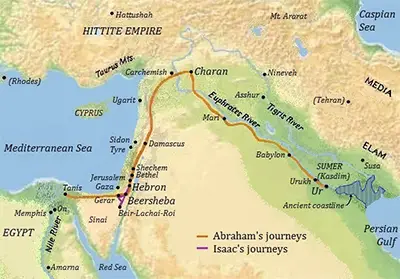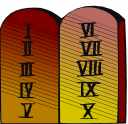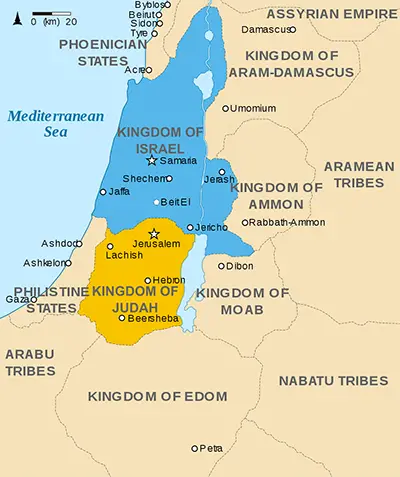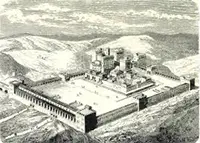Saturday, July 26, 2025
Ancient Israel
The people who lived in Ancient Israel are first thought to have settled there about 1300 B.C. The first mention of the word "Israel" comes from Egypt, from a stele built at the behest of the pharaoh Merneptah, who reigned from 1213 B.C. to 1203 B.C. 
The leader of these early peoples in their journey from Ur to Canaan was a man named Abraham, whom many people regard as the founder of three religions. He and his son Isaac and his son Jacob passed down the teachings of Yahweh to their successors and their fellow believers, and the civilization grew. It was Jacob's youngest son, Joseph, who paved the way for the Israelites to settle in neighboring Egypt. The Egyptians welcomed the Israelites at first but, tradition says, they eventually enslaved them. It was a man named Moses who led the Israelites on a daring escape from bondage in Egypt. 
The Israelites, as they came to be called, were unique at this time in their worship of just one god. Every other ancient civilization had people who believed in many gods. The Israelites had a number of laws that governed the way that they treated one another, provided for one another, and (most importantly) worshiped Yahweh. The most famous of these laws were the Ten Commandments. Rule by a group of leaders known as Judges gave way to Israel's first king, Saul, about 1050 B.C. Saul 
Solomon died in 931 B.C., and the Israelites chose that moment to split into two kingdoms, Israel in the north and Judah in the south. Those in the south rallied around the descendants of David; Samaria was the capital in the north. Israel and Judah proved unstable neighbors and fought against each other often, thus weakening themselves in the process. In 722, the Assyrians destroyed the Kingdom of Israel. Judah soldiered on, resisting conquest for as long as possible, in part by paying tribute to Assyria. A new foe arrived in the 6th Century B.C., however. A series of invasions led by King Nebuchadnezzar II of Babylon during a 13-year period led in 587 B.C. to the destruction of the Temple in Jerusalem and to the rest of Judah and a large-scale prisoner transport known as the Babylonian Captivity. In 539 B.C., Persia's King Cyrus the Great allowed the exiles to return home and encouraged them to rebuild the Temple in Jerusalem. Persia itself was overcome and defeated by the audacious Alexander the Great, who absorbed much of the Levant into his empire. After his death, in 323 B.C., a number of his generals divided the empire and Seleucus Nicator took control of Israel and Judah. The successors to Seleucus found it more and more difficult to keep control, and a Jewish revolt led by the Maccabbees brought independence in 164 B.C. A brief century later, Roman armies arrived and conquered the area known as Judea. The Rome-installed client king was named Herod. |
|
Social Studies for Kids
copyright 2002–2024
David White



 ruled for 40 years and was followed by his son, King David, who as well ruled for 40 years and was succeeded by his son, King Solomon. David was very much a warrior king and expanded the reach of Israel in most directions. Solomon was king about 970 B.C. and built the First Temple of Jerusalem, in the city established as the Israeli capital by King David. Solomon proved more interested in trade and good relations with his neighbors.
ruled for 40 years and was followed by his son, King David, who as well ruled for 40 years and was succeeded by his son, King Solomon. David was very much a warrior king and expanded the reach of Israel in most directions. Solomon was king about 970 B.C. and built the First Temple of Jerusalem, in the city established as the Israeli capital by King David. Solomon proved more interested in trade and good relations with his neighbors.
